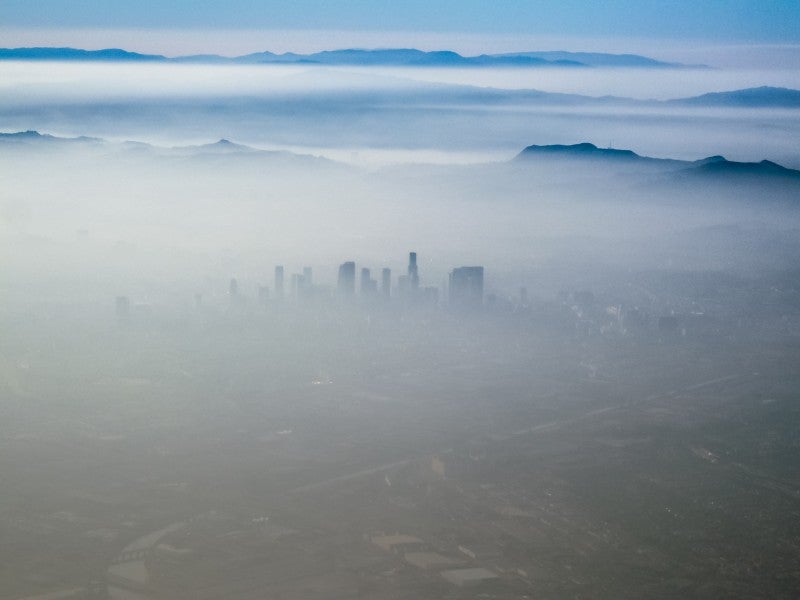EPA Pulls Plug on Smog Standards Reevaluation, Provoking Outcry
Despite clear evidence, EPA chooses to stop reconsidering indefensible, disappointing decision
Contact
The Environmental Protection Agency (EPA) announced today that it is pulling the plug on its reconsideration of the National Ambient Air Quality Standards (NAAQS) for ground-level ozone, commonly referred to as smog, and starting a lengthy, slow full review. As a result of today’s decision, if the EPA doesn’t pick up the pace, the agency would likely complete its review in the late 2020s, denying communities any chance of stronger ozone standards until implementation begins sometime in the early 2030s. The EPA’s decision comes despite mounting evidence of the adverse health impacts and environmental damage caused by ozone pollution. Environmental advocacy groups condemn the decision as scientifically, legally and morally insupportable.
Just two years ago, the EPA won praise for its announcement that it would start and, by end of 2023, finish a reconsideration of a December 2020 decision to retain outdated standards.
As part of that process, this past June, 18 independent experts on the Clean Air Scientific Advisory Committee (CASAC) reviewed the existing ozone NAAQS, and all, except one, concluded that “the scientific evidence unequivocally demonstrates that the current primary and secondary standards are not protective of public health and public welfare.” With the powerful existing evidence that the current standards allow ozone levels that send people to the hospital and harm sensitive ecosystems, the Clean Air Act demands the EPA strengthen protections.
The White House Environmental Justice Advisory Council recently called on the EPA to finalize strong new ozone standards by spring 2024. The EPA’s decision rejects that recommendation. And the EPA’s ozone NAAQS reviews routinely lag, meaning that, unless the EPA devotes to this issue the attention it deserves, overburdened communities will likely have to wait until the late 2020s, at the earliest, before they can get the needed, overdue protections. In the meantime, children, people with asthma, and older adults who are most sensitive to smog will continue to suffer serious health harm.
“The consequences of inaction on ozone are clear — more asthma attacks, increased respiratory illnesses, and harm to vulnerable communities,” said Raul Garcia, Earthjustice vice president of Policy and Legislation. “Despite its commitments and the clear recommendations by WHEJAC and by EPA’s own Clean Air Scientific Advisory Committee, the Biden administration has failed to follow the science and prioritize the health and well-being of our communities. And, since 2008, the EPA has disregarded the clear science and the law and refused to set a separate standard to protect the environment. EPA has now locked an unprotective, unjustifiable approach indefinitely. People at home will continue to ask themselves: how many deaths or asthma attacks does it take to merit action on ozone? The science tells us we are long overdue. The EPA must come through for communities with strong NAAQS, not this waffling and punting.”
Ground-level ozone continues to pose serious health risks, particularly to vulnerable populations, and failing to address this issue hampers progress toward cleaner air nationwide, for everyone. Ozone pollution, a byproduct of fossil fuel emissions from vehicles, factories, and other sources, causes severe health harm, like asthma attacks and other respiratory issues, and has been linked to premature deaths.
Ozone pollution also damages the environment. It slows plant growth, including for certain tree species and agricultural crops. Through its effects on vegetation, it can alter and harm entire ecosystems. It is also itself a powerful greenhouse gas.
Community members and health and scientific experts have been advocating for decades for more stringent ozone standards to ensure cleaner air and healthier living conditions. The current ozone NAAQS was set in 2015. They were hastily reviewed and retained in a December 2020 decision that sparked significant criticism. Because it abandoned its reconsideration process, the EPA is now legally obligated to complete a full review of the ozone standards by December 23, 2025.
This is not the first time an EPA reconsideration of weak ozone standards has abruptly ended. In 2011, the White House directed the EPA to drop its reconsideration of the 2008 ozone standards, a decision that undermined public health and the environment. Even more delay ensued, stopping only when health and environmental groups sued the EPA to compel it to finish its overdue work. And even with the extra time, in 2015, the EPA once again set an environmental standard that failed to stand up in court.
The EPA is further along in its reconsideration of the particulate matter NAAQS, with a final decision expected this fall.

Additional Resources
About Earthjustice
Earthjustice is the premier nonprofit environmental law organization. We wield the power of law and the strength of partnership to protect people's health, to preserve magnificent places and wildlife, to advance clean energy, and to combat climate change. We are here because the earth needs a good lawyer.